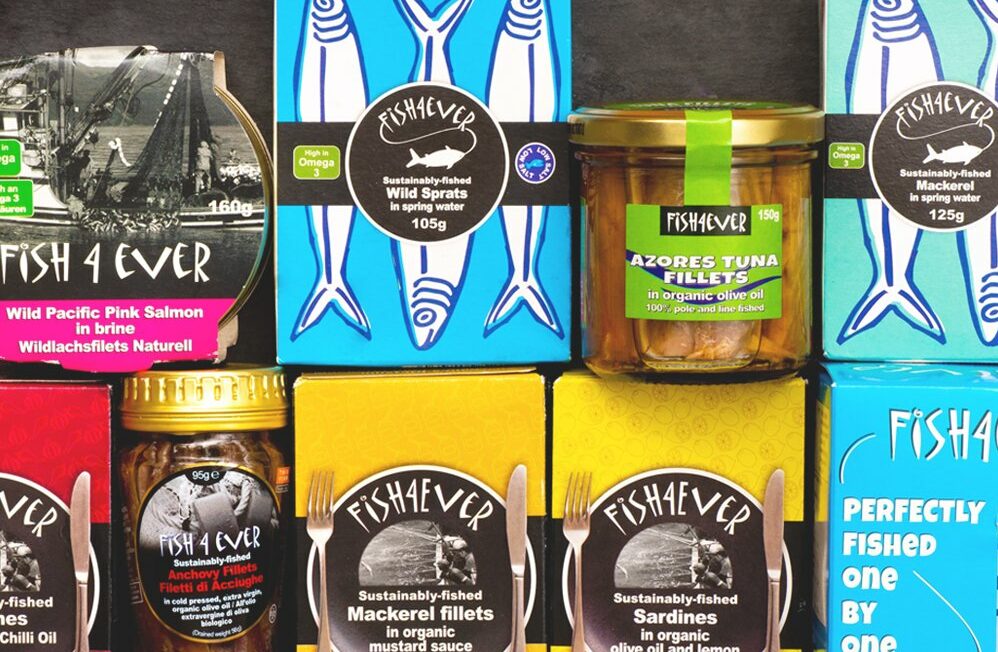The best BBQ Delivery Boxes in the UK from small sustainable British Farms
“Is it possible to eat prawns sustainably?” I ask seafood expert Caroline Bennett halfway through our conversation about all types of sustainable seafood, dreading the answer.
“I would say prawns are one of those real treats. You should never just have a prawn sandwich for lunch. The way wild prawns are caught is incredibly damaging to the environment.”
“What about farmed prawns?” I ask, willing Caroline to tell me what I want to hear (as you probably are willing me to write while reading this article).
Bennett doesn’t beat around the bush:
“There are so many issues around prawn farming. Not least that The intensification of farming has putrefied mangroves across the world.”
The good news is, you can eat prawns in a way that doesn’t destroy the seabed or mangroves (or involve modern slavery, but more on that further down).
The not-so-great news is it’s more expensive. So every time you fancy a prawn, you have to really fancy a prawn and remind yourself why you’re paying so much extra.
So, we’ll deal with that part first.
And, if you simply want a couple of links to sustainable prawns, then scroll straight to the bottom of this article (just like a prawn would do)…
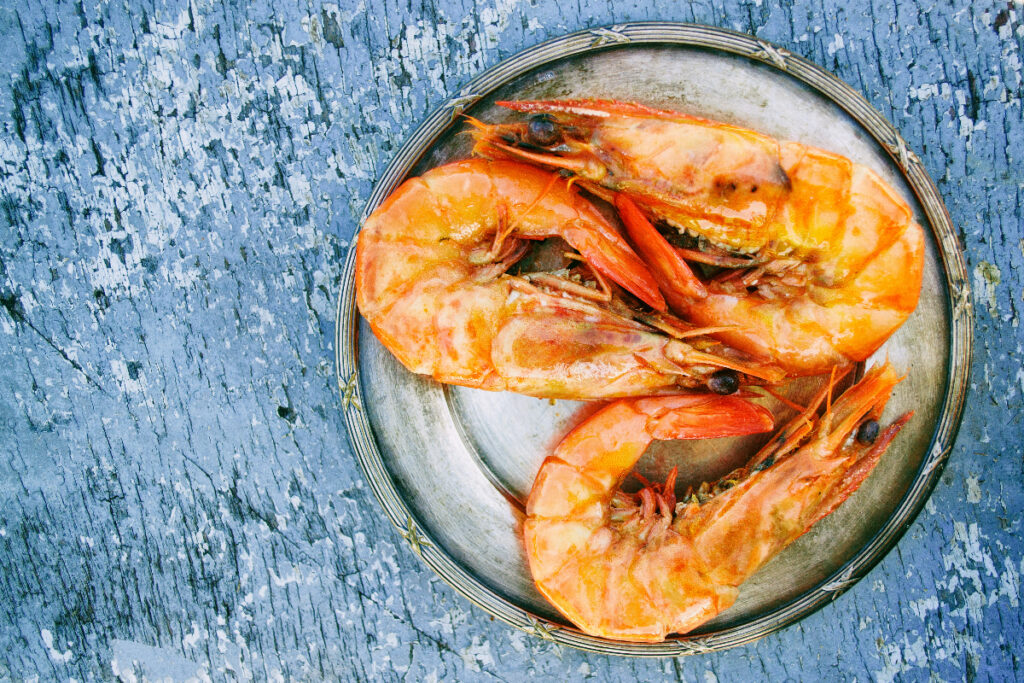
Unsustainable wild prawns: why trawling is so bad for the seabed
Prawns are bottom-dwellers. They live in muddy or sandy river beds and ocean floors.
This means they are commonly caught by trawling: imagine wide-mouthed nets, weighted to fall to the seabed and often fitted with wheels to help them run along seabeds without snagging on rocks.
Prawn trawling is considered the second most damaging UK marine fishery after scallop dredging, according to Open Seas [1], a charity that focuses on data and evidence to call for long-term protection of the marine environment.
They have reams of evidence about how intensive trawling simplifies the ecosystem, killing diversity and abundance of marine life [2].
“Do you know what the really awful part about this is?” asks Caroline.
“An argument industrial fishing boats use now is that they are just dredging the sandy bottom of the sea, they’re not really doing the marine environment any harm. And to some extent, it’s true. But, once upon a time, the seabed would have been alive with coral and seagrass meadows and all sorts of fish and now they’ve completely trashed it.”
Seagrass meadows are important nurseries for fish. They are also brilliant carbon sinks – much more effective than rainforests even. Plus, they help to filter the water and keep it clean and oxygenated. It’s a catastrophic loss. But species and habitats can recover – if allowed to do so.
“However trashed the seabed is, they can’t get away from the carbon emissions, which are massive when it comes to trawling for prawns. And you can’t get away from the bycatch issues either.”
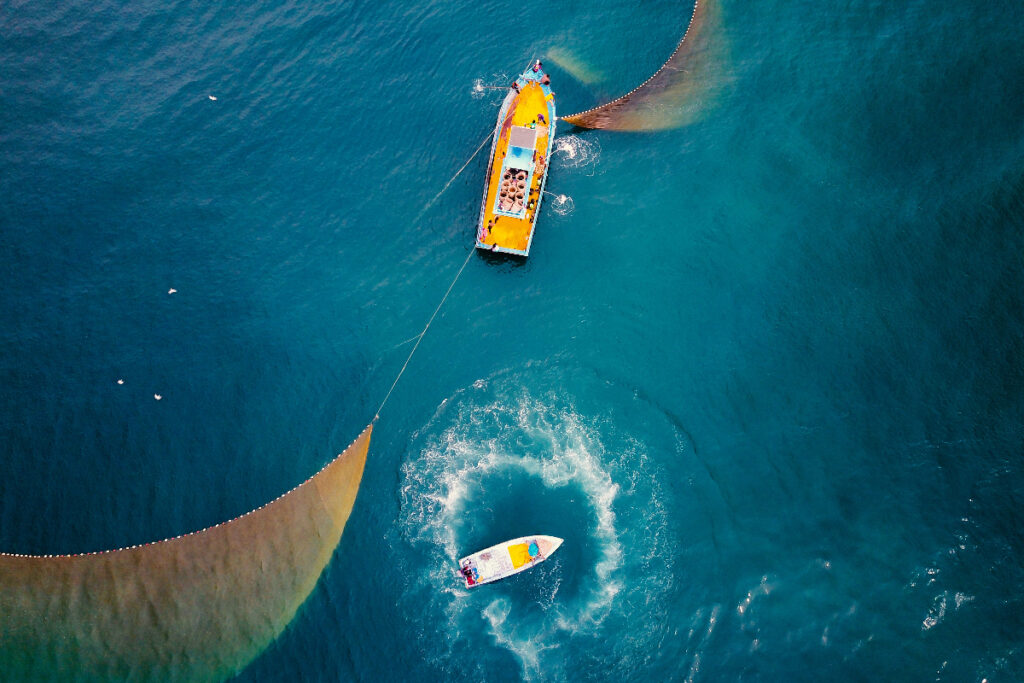
Unsustainable wild prawns: the issue with bycatch
Bycatch is the fish, shellfish and other marine species accidentally caught and typically thrown back into the sea, dead or dying.
The reported bycatch of prawn trawling is colossal.
“The scale of bycatch problems is different in different areas,” reports Open Seas [1], using EU research [3]. “In the Clyde studies have found that between 66 – 80% of the catch (by weight) was unwanted [4], in other areas only 12% of the original catch was kept [5].”
They continue:
“Much of the fish being discarded are potentially commercially valuable, edible species such as hake, sole, plaice, cod, whiting and haddock. Scientific advice from ICES states that stocks of west coast cod and whiting will not recover until this bycatch problem is reduced.”
Although discarding was made illegal in 2019, the practice is “widely accepted” to continue.
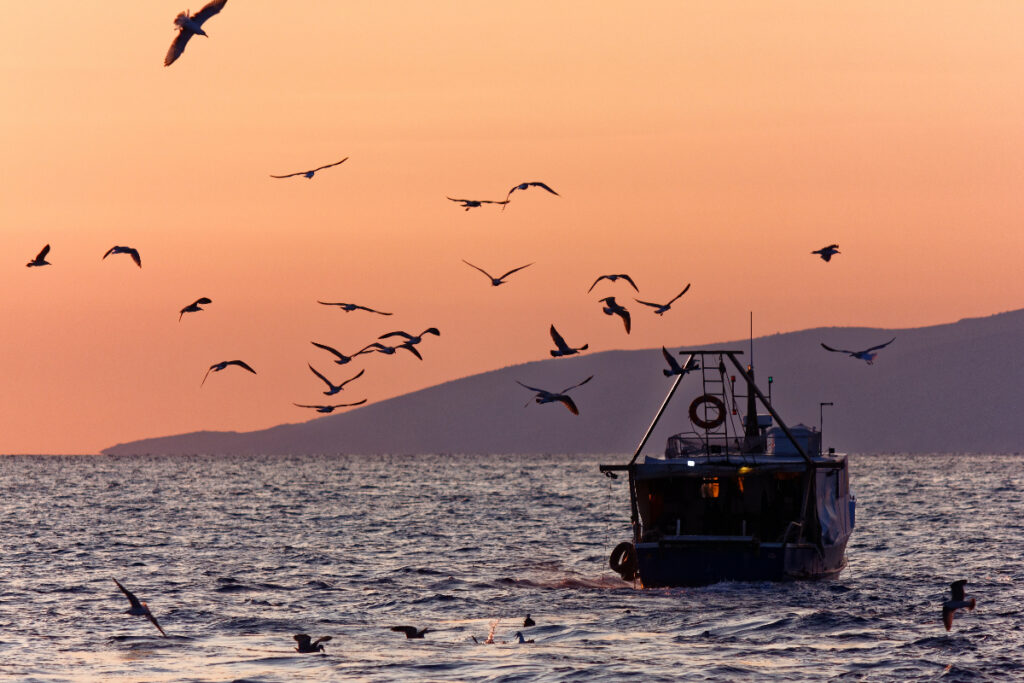
Unsustainable prawns: the human cost
The seas not being regulated properly has a huge human cost, too. Human Rights issues are rife on fishing vessels, including those operating in the UK.
“When it comes to prawns, it’s widely known in places like Burma and Thailand, where crew comes from places like the Philippines, they’re left out at sea for a long time. And if a crew member’s not behaving, they simply get rid of them,” explains Caroline.
While this rarely makes the headlines in the UK (who cares about an unknown immigrant fisherman, ey?) if you Google this, you will find many reports about this. Plus, you’ll find reports on environmentalists highlighting the issues around unsustainable seafood being targeted.
Prawn farms are not always any better. Human rights abuses including violence, intimidation, child labour, forced and bonded labour and even murders have been linked to prawn farming in 11 countries, reports the Environmental Justice Foundation (EJF) [A].
Unsustainable farmed prawns: the issue with prawn farms
Traditionally, prawns were farmed in semi-mangrove tropical countries like Vietnam and South America. You can now buy them from all over the world including Madagascar, Bangladesh, India and Thailand.
Caroline goes into great detail about how the intensification of prawn farming has destroyed the mangroves – prawn feed rots and causes algae blooms, antibiotics fed to the prawns to control disease upsets the natural balance and the water they are living in is putrid.
“Generally, if you’re eating a farmed prawn you’re eating something stacked with antibiotics – they’re intensively reared in tropical climates so they get diseases all the time,” she states.
“It’s the same with any animal, isn’t it? When they’re intensively farmed, they get sick.”
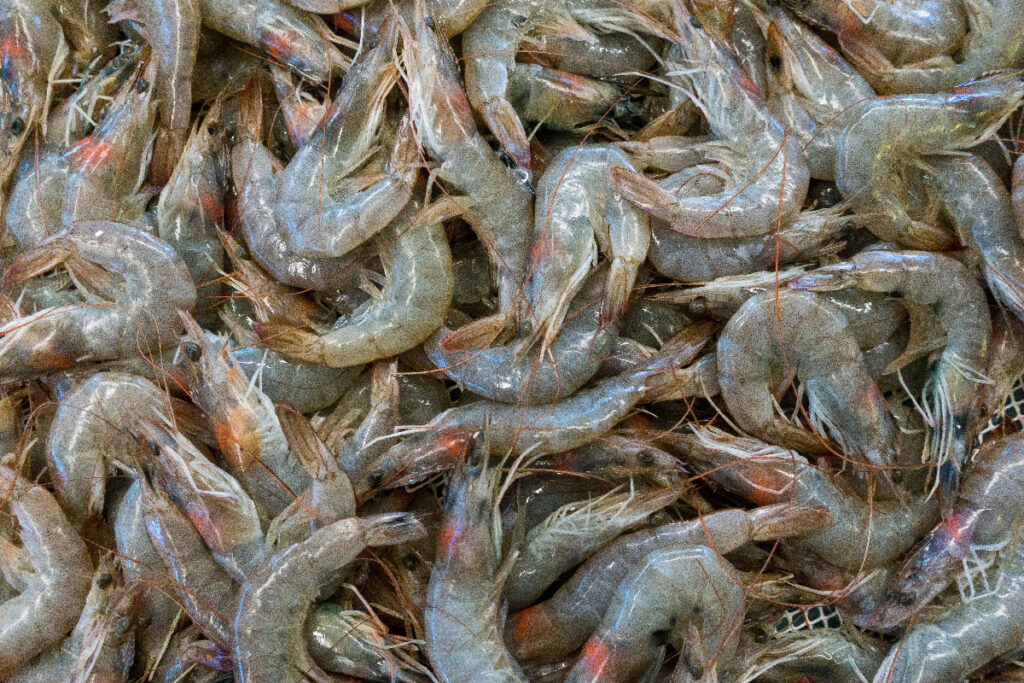
Sustainable prawn farming: the rise of the organic prawn farming
“Yet Indigenous communities have been farming prawns very effectively and without any damage to the local environment for centuries. Prawns were a staple food.”
Caroline continues:
“There is now a move towards learning from this and creating smaller-scale, lower intensity, farmed prawns. These are the ones I have been sourcing for my restaurant, Moshi Moshi.
“There is one company in New Caledonia that we used to source from. The owners were WhatsApp videoing me around the farm, which was great but they’ve stopped supplying to the UK. So, now we source from a farm in Selvashrimp in Vietnam which is certified organic by Naturland – the German organic certification.”
It’s important to note that Caroline doesn’t put my credence on all organic certifications in this area though because they can be fairly weak and you might be buying intensively farmed prawns and just paying more for them. That’s why it’s important to speak to each farm directly, or source from a trusted provider. And only eat them as a treat.
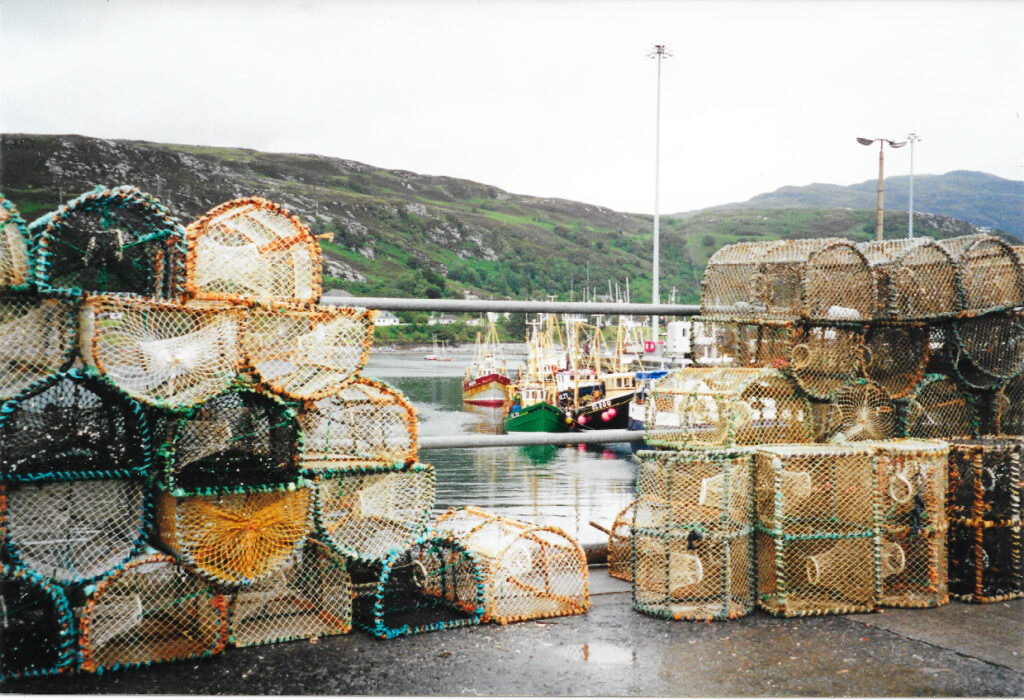
Sustainable wild prawns: how to catch prawns in a way that doesn’t damage the seabed
Fishermen can catch prawns with a Creel – like a wire basket. This is a species-selective and much more environmentally sustainable form of fishing with very little by-catch. Species are brought to the surface alive and undamaged, meaning that egg-bearing females or undersized animals can be returned to the sea. The carbon footprint is minimal compared to other methods of fishing as the majority of boats are small and fish relatively close to shore [6].
There are very few prawns caught in this way and they are colossally more expensive so they are often exported to Europe because we won’t pay for them here.
“If you’re eating lovely langoustines in Spain, there’s a good chance they’re from the British coast,” says Caroline.
Sole of Discretion sell creel-caught Cornish prawns, but they cost anything up to £50 a kilo, Caroline explains. By her own admission:
“They’re pretty small – especially by the time you’ve taken the head and tail off and have chopped through the legs.
“You know, you have to really love seafood to think ‘yep, this is worth paying that money for that’.”
But, if you flip that question, we also need to ask ourselves if a trawled or farmed prawn is really worth the very high environmental and human costs?
Where to buy sustainable seafood…
Here’s our top two favourite brands for buying genuinely sustainable fish. Prawns are available at Sole of Discretion:
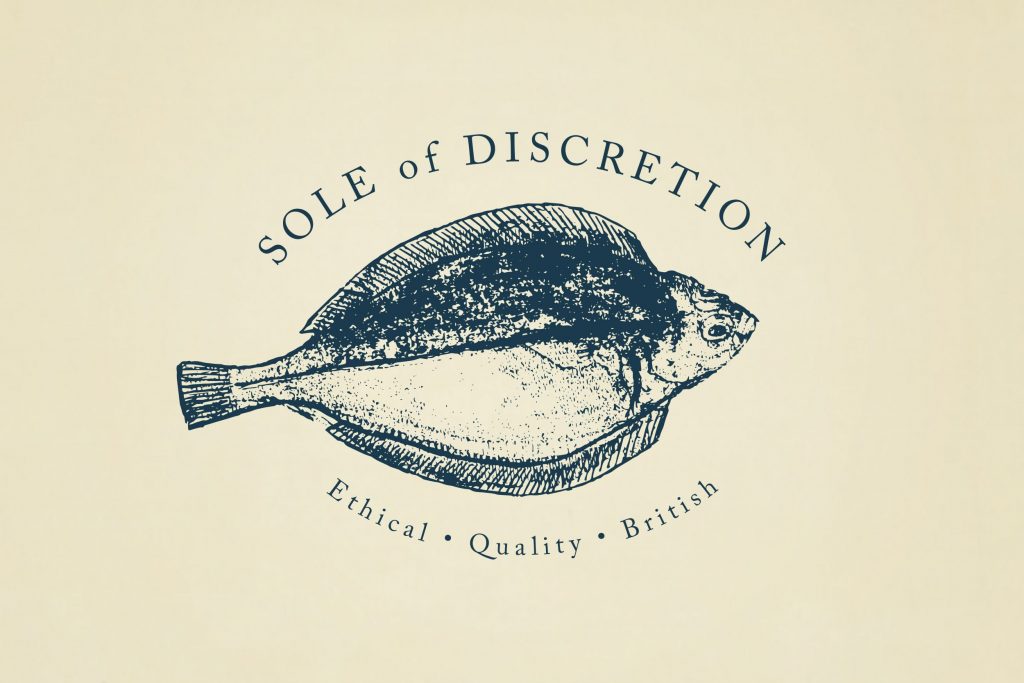
Sole of Discretion
Fresh fish, fished to the highest ethical standards.
References
[1] https://www.openseas.org.uk/evidence/
[2] https://www.int-res.com/articles/meps/213/m213p127.pdf
[3] https://oceans-and-fisheries.ec.europa.eu/index_en
[4] https://epic.awi.de/id/eprint/10389/
[5] https://academic.oup.com/icesjms/article/51/2/155/67447
[6] http://www.scottishcreelfishermensfederation.co.uk/creeling.htm
Main image credit: blackieshoot on Unsplash

